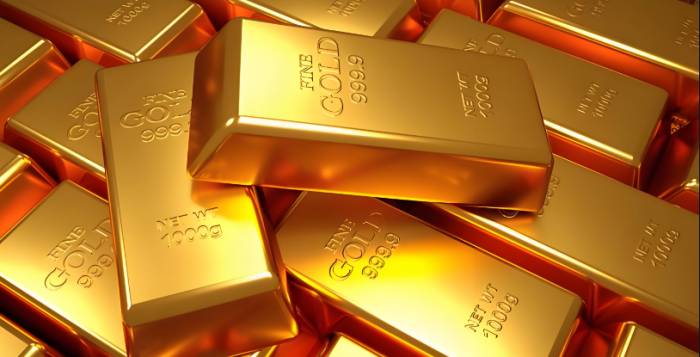At present, gold has taken a significant plunge, with a drop of -1.25%, and the price of gold per gram has fallen by 7.88 yuan. Friends who bought at high levels have already cried themselves out on the mountaintop, but those who haven't had the chance to escape yet need not panic too much. Gold has achieved a ten-day consecutive increase, which is already a brilliant achievement in the history of gold. It is also normal for gold not to keep rising continuously, and a correction is quite normal. Recently, there have been a super large number of people entering the gold market. Big players won't let everyone make money, so it's time to shuffle the cards and clean up, which is healthier. For friends who have been waiting for an opportunity to get on board, today is a good opportunity. For those who got on board at high levels, today is a chance to replenish and lower the gold price, so as to get the deserved return when it jumps in the future.
So, how will the gold price trend in the future? Let's analyze it together:
1. Recent Situation
Since 2024, the gold price has risen by more than 32%. On October 23, the gold price fell after reaching a historical high, as the strengthening of the US dollar and the rise in US Treasury yields offset the support of safe-haven demand brought by the US election on November 5 and the war in the Middle East. On Wednesday (October 23), as of 01:30 Beijing time, spot gold fell by 1.19% to $2,716.10 per ounce, and it had touched a historical high of $2,758.33 earlier in the session.
Advertisement
2. Views of Experts and Institutions
Marco Hermann, an expert from the German Trust Wealth Management Company, believes there are signs that the gold price still has room to rise, with central banks being the biggest drivers. In the first half of 2024, central banks bought a total of 483 tons of gold, setting a new record. If Harris is elected, the gold price will rise immediately; if Trump wins, there may be two situations of gold price rise or fall, but factors with long-term influence will eventually have a positive impact on the gold price. He also pointed out that factors such as debt levels and increasingly tense geopolitical situations make gold more attractive, and a gold price of $3,000 per ounce is just a phased target in the process of rising. The Overseas Chinese Bank believes that the uncertainty of the US election results increases, making the trading strategy of hedging against the risk of Trump's election, that is, going long on gold, favored. The market's optimistic expectation that global central banks will continue to ease monetary policy has also driven up gold prices. Last week, the European Central Bank cut interest rates for the third time this year, and the market is now betting that the Federal Reserve will cut interest rates by 25 basis points in November. The global entry into a low-interest-rate environment is beneficial to gold, a non-interest-bearing asset.
3. Analysis of Influencing Factors
3.1 Geopolitical Factors
From the escalating geopolitical tensions to the rapidly rising public debt, gold, often seen as a "safe haven," has benefited greatly. The current focus is on the continuously growing global debt and the upcoming US election. If Trump is elected and expands fiscal spending or reduces fiscal revenue through tax cuts, leading to debt accumulation, the Federal Reserve will give up further rate cuts, the US dollar will strengthen, and gold prices will be suppressed at least temporarily; but in the long run, factors such as debt levels and increasingly tense geopolitical situations make gold more attractive.3.2 Market Demand Factors
Central banks around the world are significant buyers of gold, with a record 483 tons of gold purchased by central banks in the first half of 2024. In addition, over the past three years, the total holdings of global gold exchange-traded funds (ETFs) have decreased, indicating a waning interest from financial investors. However, this trend has reversed in the last three to four months, suggesting that buyers other than central banks may also be increasing their gold holdings.
3.3 Dollar and Interest Rate Factors
The dollar often has an inverse relationship with gold. When the dollar strengthens, the cost of purchasing gold increases, which suppresses demand and lowers gold prices. Conversely, when the dollar weakens, the cost of purchasing gold decreases, demand increases, and gold prices are driven up. At lower interest rates, the opportunity cost of holding gold is reduced, making investors more willing to hold gold, which leads to price increases. In a high-interest-rate environment, investors tend to deposit their funds in banks to earn interest, reducing investment in gold and causing gold prices to fall.

3.4 Market Sentiment and Other Factors
Gold is considered a hedge against political and economic uncertainty. Driven by the Federal Reserve's interest rate cut last month and safe-haven demand, gold prices have risen by over 32% this year. Furthermore, this week, fund managers have increased their long positions in gold, while short positions have decreased, and the holdings of gold exchange-traded funds continue to rise.
All of the above analyses indicate that there is still room for the gold market to rise in the future. However, it is essential for investors to fully understand their own risk tolerance and closely monitor the global political and economic situation to discern the timing for investment.
Leave a Reply